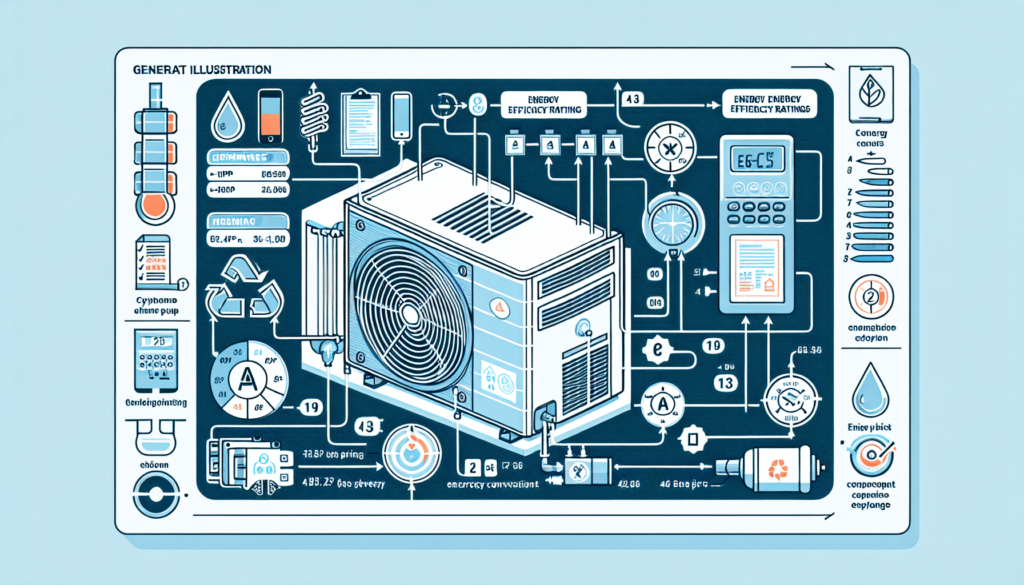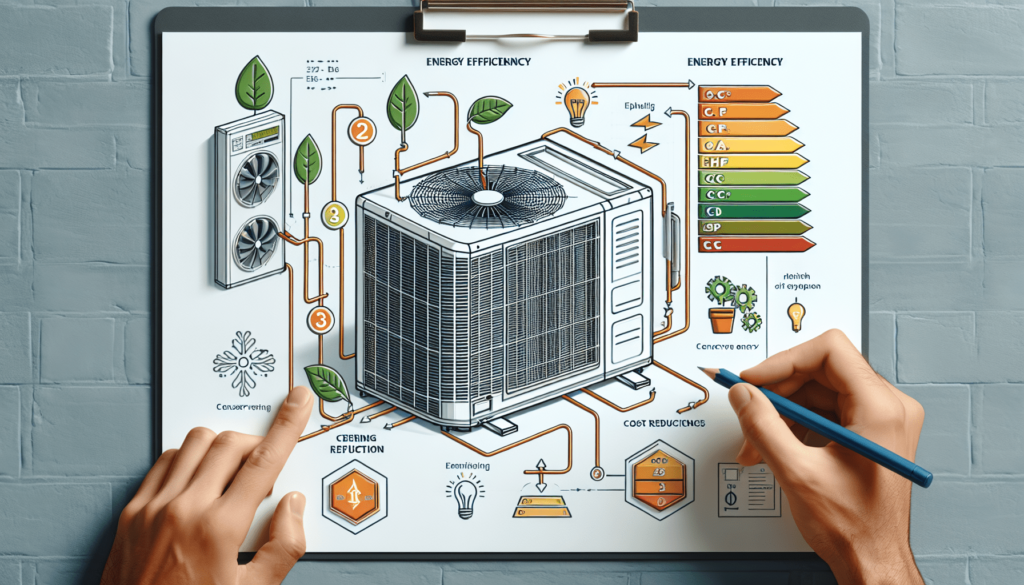Welcome to a simple guide on understanding energy efficiency ratings for mini split heat pumps! These ratings are key to helping you make an informed decision when selecting a heating and cooling system for your home. By familiarizing yourself with these ratings, you will be able to save money on your energy bills and reduce your carbon footprint. Let’s dive in and explore the important factors to consider when evaluating the efficiency of mini split heat pumps.
Energy Efficiency Ratings Explained For Mini Split Heat Pumps
Are you considering installing a mini-split heat pump in your home but feeling confused about all the energy efficiency ratings? Don’t worry, we’ve got you covered! In this article, we will break down and explain the energy efficiency ratings for mini-split heat pumps so you can make an informed decision. Let’s dive in!
Understanding Energy Efficiency Ratings
When it comes to heating and cooling systems, energy efficiency is crucial. Energy efficiency ratings help consumers understand how much energy a system uses to heat or cool a space. The higher the rating, the more energy-efficient the system is. For mini-split heat pumps, there are a few key energy efficiency ratings you should be familiar with:
SEER (Seasonal Energy Efficiency Ratio)
SEER is a measure of the cooling efficiency of a heat pump. It is calculated by dividing the total cooling output of a system by the total electrical energy input during the same period. The SEER rating for mini-split heat pumps typically ranges from 15 to 30. The higher the SEER rating, the more efficient the system is at cooling your home.
HSPF (Heating Seasonal Performance Factor)
HSPF is a measure of the efficiency of a heat pump when heating a space. It is calculated by dividing the total heating output of a system by the total electrical energy input during the same period. The HSPF rating for mini-split heat pumps typically ranges from 8 to 13. The higher the HSPF rating, the more efficient the system is at heating your home.
EER (Energy Efficiency Ratio)
EER is another measure of the cooling efficiency of a heat pump but is calculated differently from SEER. EER is calculated by dividing the cooling output of a system by the electrical power input. The EER rating for mini-split heat pumps typically ranges from 10 to 16. The higher the EER rating, the more energy-efficient the system is at cooling your home.
COP (Coefficient of Performance)
COP is a measure of the efficiency of a heat pump when both heating and cooling a space. It is calculated by dividing the heating or cooling output of a system by the electrical power input. The COP rating for mini-split heat pumps typically ranges from 2 to 4. The higher the COP rating, the more efficient the system is at both heating and cooling your home.
Why Energy Efficiency Ratings Matter
Energy efficiency ratings are crucial for several reasons:
- Lower Energy Bills: An energy-efficient mini-split heat pump can help you save money on your energy bills by reducing your overall energy consumption.
- Environmental Impact: Energy-efficient systems consume less energy, which means they have a smaller carbon footprint and are better for the environment.
- Comfort: Energy-efficient systems can provide consistent and comfortable temperatures throughout your home without wasting energy.
By understanding energy efficiency ratings, you can choose a mini-split heat pump that meets your needs while also being environmentally friendly and cost-effective.

How to Choose the Right Energy Efficiency Rating for Your Home
When choosing a mini-split heat pump for your home, there are a few factors to consider to ensure you choose the right energy efficiency rating:
Climate
The climate in which you live plays a significant role in determining the right energy efficiency rating for your mini-split heat pump. If you live in a mild climate with moderate temperatures year-round, a lower SEER or HSPF rating may be sufficient. However, if you live in a climate with extreme temperatures, a higher SEER or HSPF rating may be necessary to keep your home comfortable.
Size of Your Home
The size of your home also plays a role in determining the right energy efficiency rating for your mini-split heat pump. A larger home may require a more energy-efficient system to maintain consistent temperatures throughout the space. Conversely, a smaller home may not require as high of a rating to achieve the same level of comfort.
Energy Costs
Consider your energy costs when choosing an energy efficiency rating for your mini-split heat pump. While a system with a high SEER or HSPF rating may be more expensive upfront, it can save you money in the long run by reducing your energy bills. Calculate the potential savings over time to determine the right balance between upfront costs and long-term savings.
Tips for Improving Energy Efficiency
In addition to choosing a mini-split heat pump with a high energy efficiency rating, there are several tips you can follow to improve the overall energy efficiency of your system:
-
Regular Maintenance: Keep your mini-split heat pump well-maintained by cleaning or replacing filters, checking for leaks, and scheduling regular tune-ups with a professional technician.
-
Proper Installation: Ensure your mini-split heat pump is installed correctly to maximize its efficiency. Poor installation can lead to energy loss and reduced performance.
-
Smart Thermostat: Consider installing a smart thermostat to control the temperature and settings of your mini-split heat pump more effectively, reducing energy consumption.
-
Insulation: Proper insulation in your home can help reduce the workload on your mini-split heat pump, leading to increased energy efficiency.
By following these tips, you can maximize the energy efficiency of your mini-split heat pump and enjoy lower energy bills while also reducing your impact on the environment.

Conclusion
Energy efficiency ratings play a crucial role in determining the performance and effectiveness of a mini-split heat pump. By understanding these ratings and how they impact the operation of your system, you can make an informed decision when choosing a mini-split heat pump for your home. Consider factors such as climate, home size, and energy costs to determine the right energy efficiency rating for your needs. Additionally, follow tips for improving energy efficiency to ensure your system operates at its peak performance and helps you save money on your energy bills. With the right energy efficiency rating and proper maintenance, you can enjoy a comfortable and energy-efficient home all year round.

